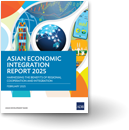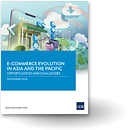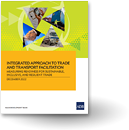Indonesian farmers gain from supplying to supermarkets
The food-retail sector in many developing countries has been transformed by the liberalization of retail foreign direct investment in the 1990s. Increase in per capita income and urbanization have resulted in major shifts in food consumption patterns and shopping behavior. Consumers are eating more calories on average, while shifting from staples toward high-value fruits and vegetables. Shoppers are also more able and more willing to pay a higher price for convenience, food quality and food safety, reinforcing the role of supermarkets in the food-retail sector.
These ongoing trends provide opportunities for agriculture producers, who tend to represent a lower income group of the population, to participate in a growing and modern agricultural sector. More important given the short-supply chain between production to consumption of fresh fruits and vegetables, any efficiency improvement along the value chain would easily benefit producers.
Fresh produce sold in the modern market usually commands a higher price compared to that sold in the traditional market. However, not all produce can be sold to supermarkets or for export. Standards on food safety and quality set by both exporters and supermarkets are much stricter. Hence, quality is key to differentiating whether a produce is sold to supermarkets or traditional markets.
Produce sold to supermarkets earns a higher price, but also requires higher investment. Thus, it is unclear whether producing for supermarkets can increase farmers’ income. Furthermore, it is not straightforward to identify producers who supply to supermarkets.
An empirical study based on micro-farm household data from Indonesian chili producers by the author finds the following: First, farmers who sell to supermarkets earn higher income. Second, more productive and resource-rich farmers—farmers with more land, who own trucks or water pump—are more likely to invest in better seeds and fertilizers, which increase output quality and earn higher profits.
Third, among farmers who sell to supermarkets, those who do not know that their produce is sold to the supermarkets earn a profit margin—up to four times less— than farmers who know. This asymmetry arises because farmers do not sell directly to the supermarkets but through intermediate traders. The information advantage that intermediate traders have in terms of product quality and marketing channel puts them in a more superior bargaining position vis-à-vis farmers who have less market information.
These findings point to several policy implications. First, to ensure better quality produce, infrastructure needs be improved to allow easier and more efficient market access. Poor road infrastructure and lack of cooling-transport facility increases the chance that the fresh produce is damaged or spoiled during transit.
Second, farmers must have better access to credit so that they can make the necessary investment needed to improve quality and quantity. Without access to credit, resource-poor farmers will not be able to invest in inputs or expand their capacity to meet the quality and quantity requirements demanded by supermarkets.
Third, farmers must have information that their produce is sold to supermarkets. Even if farmers are able to sell high quality produce to the supermarkets, those who sell to the traditional markets still earn a lower profit. A more open market information platform is therefore important so that farmers can earn a fairer share of the profit in relation to intermediate traders.




